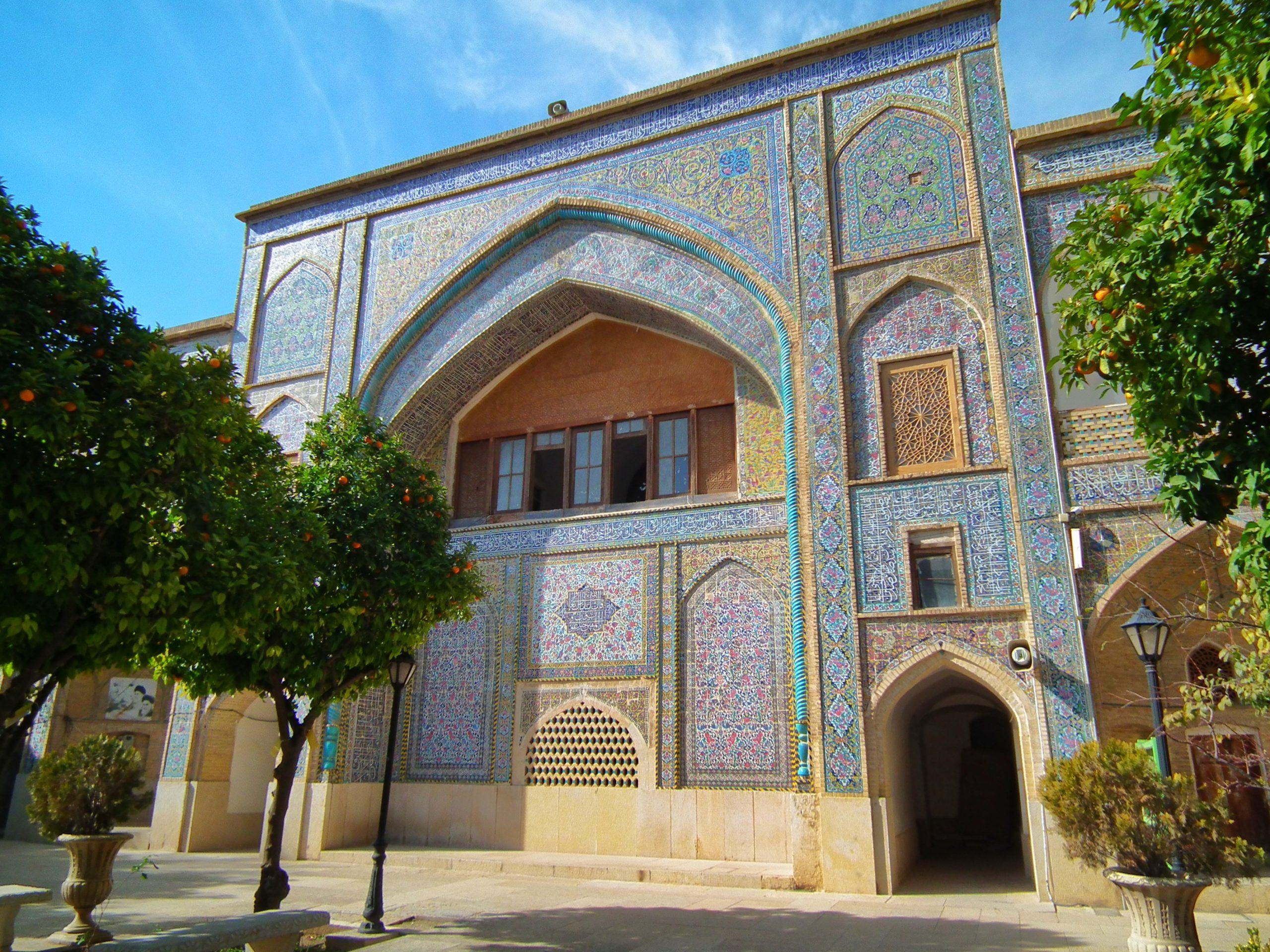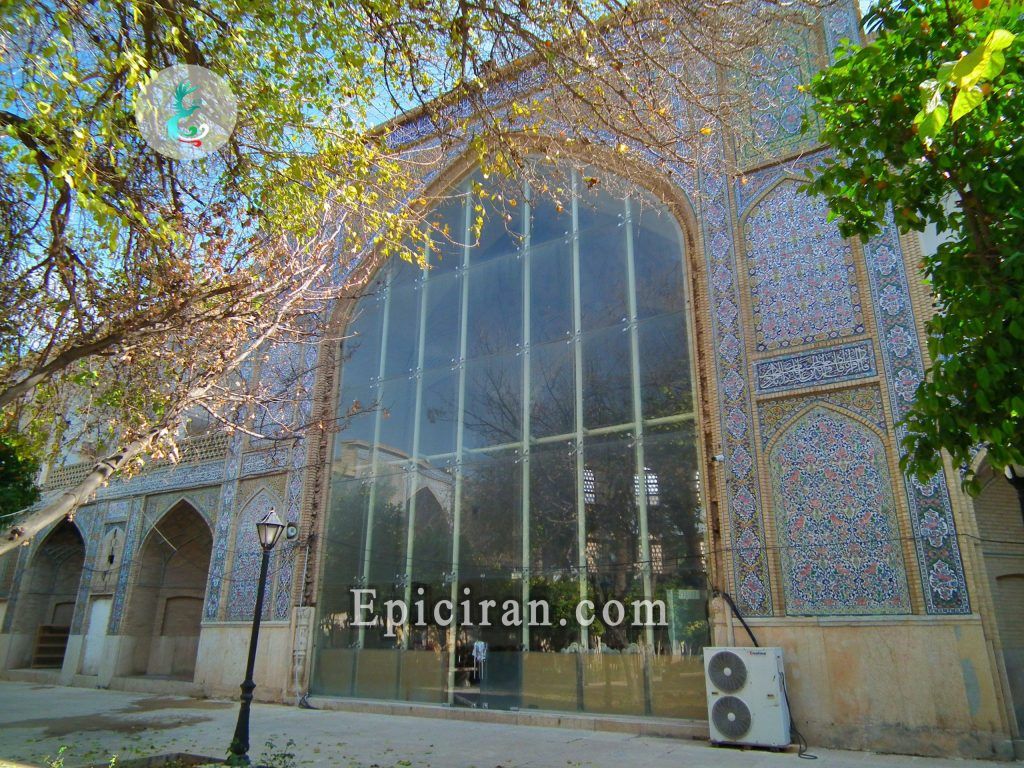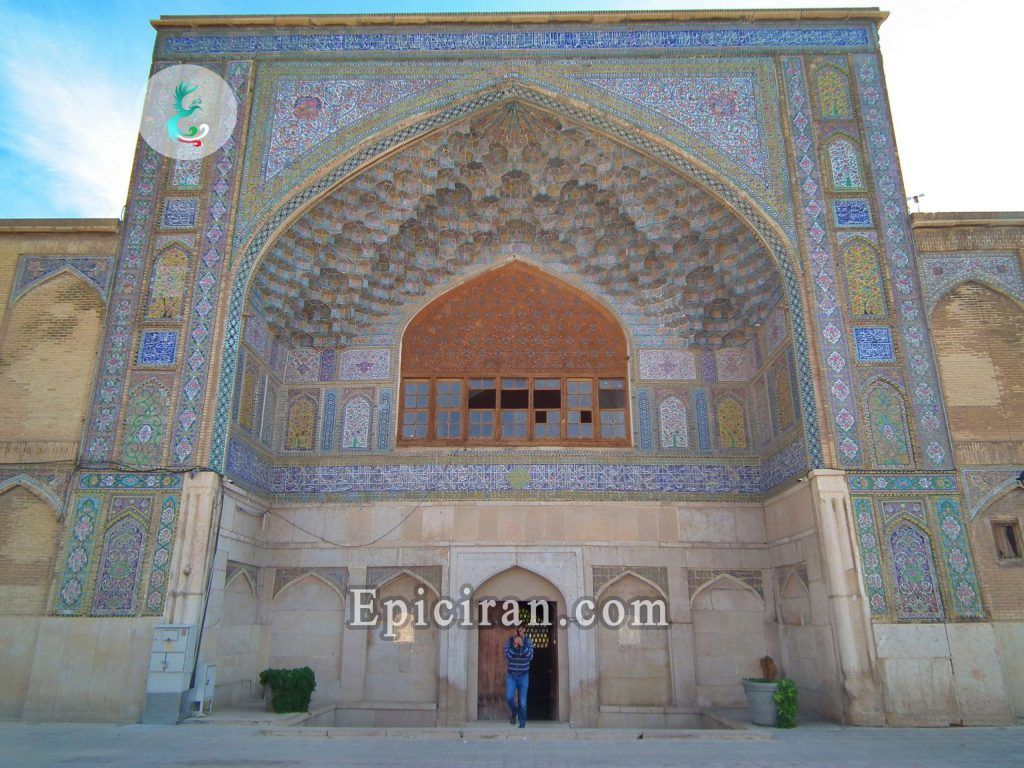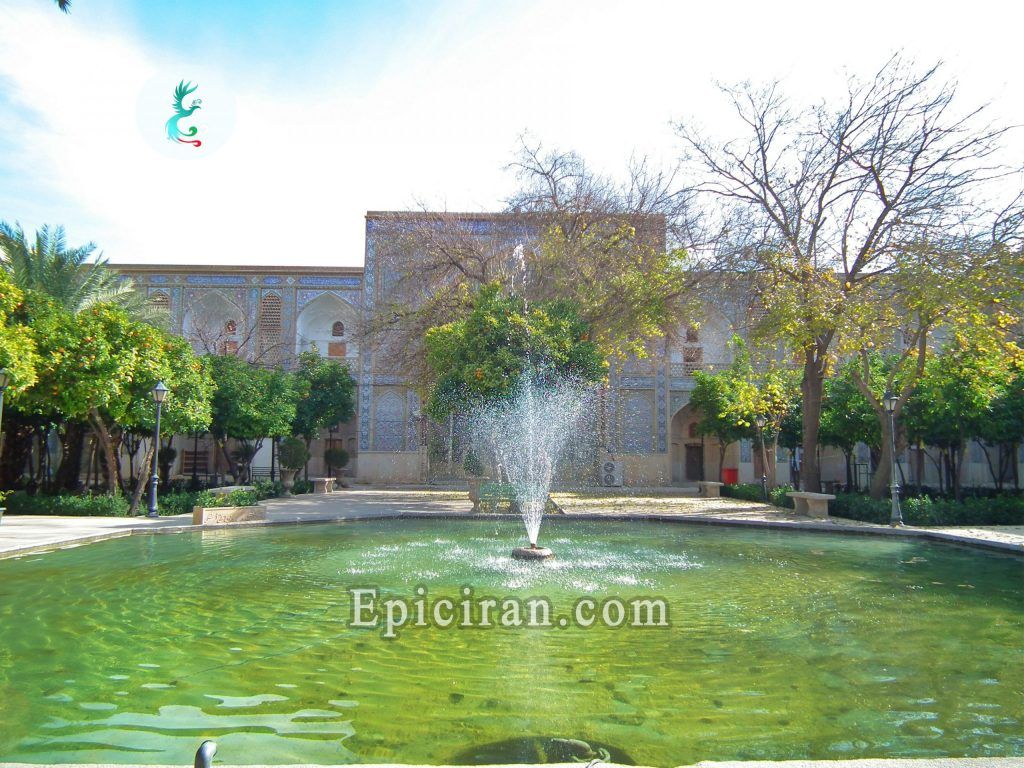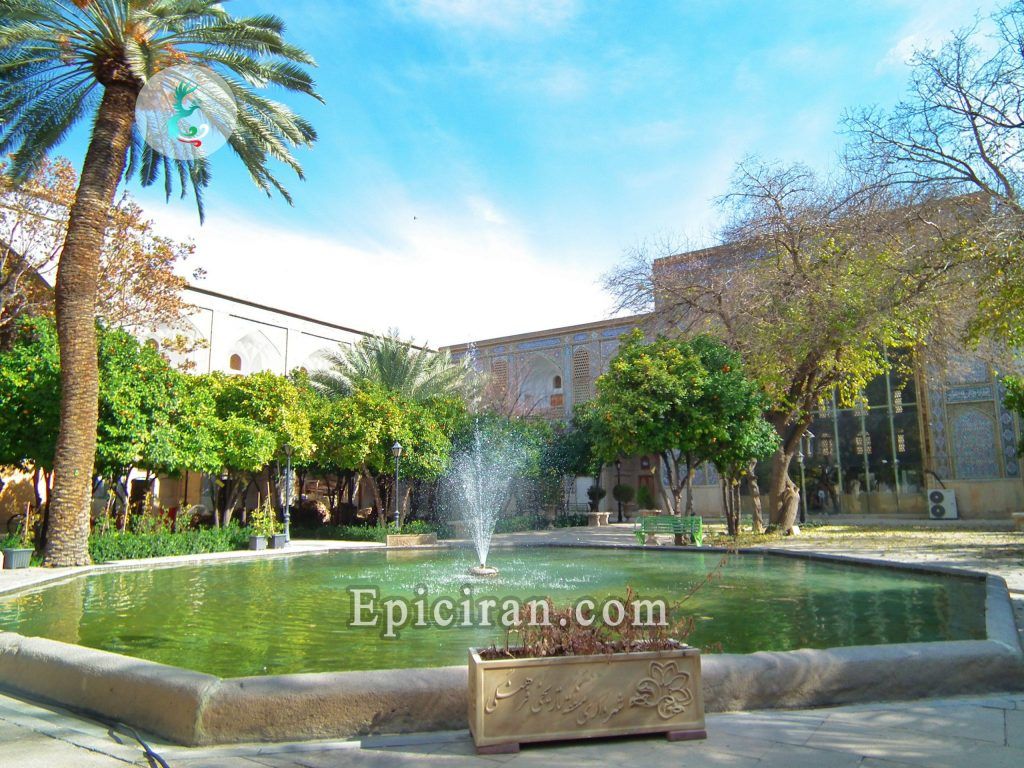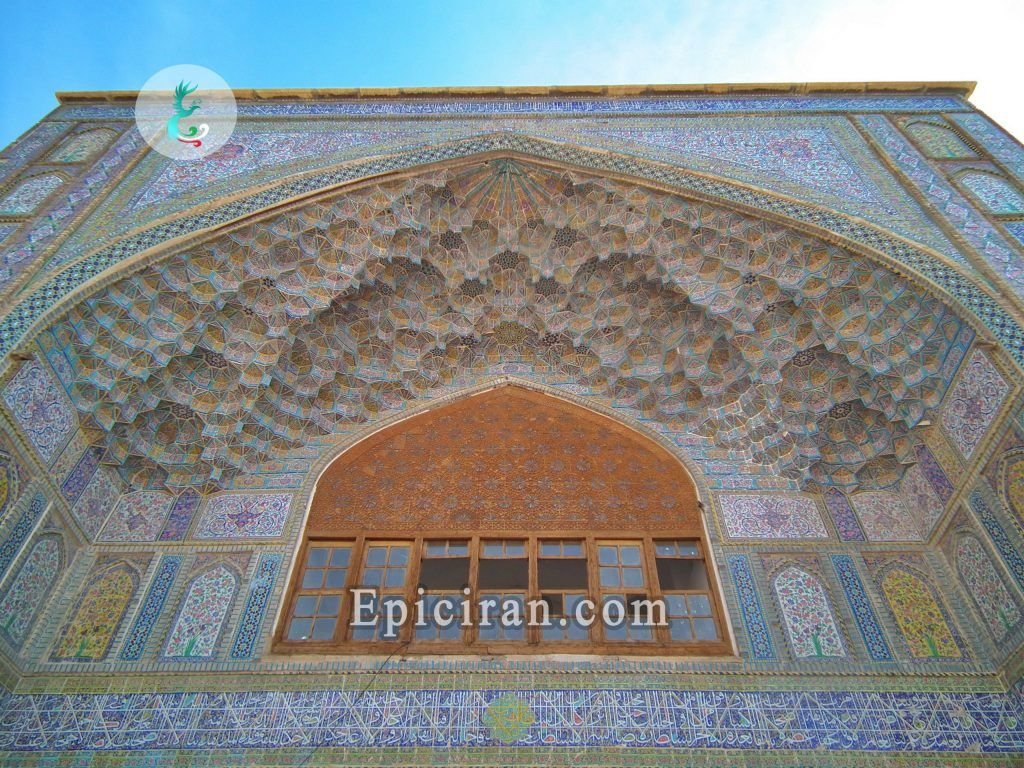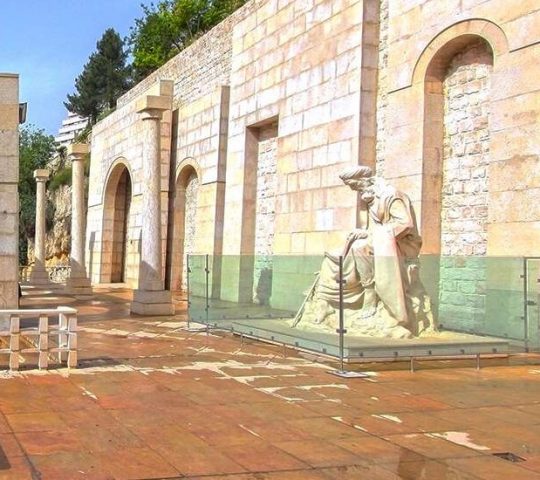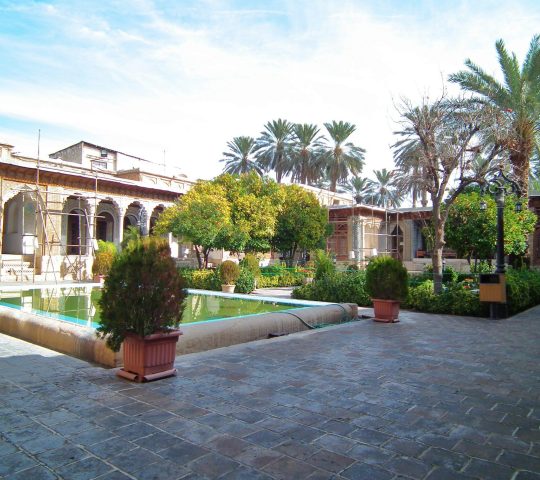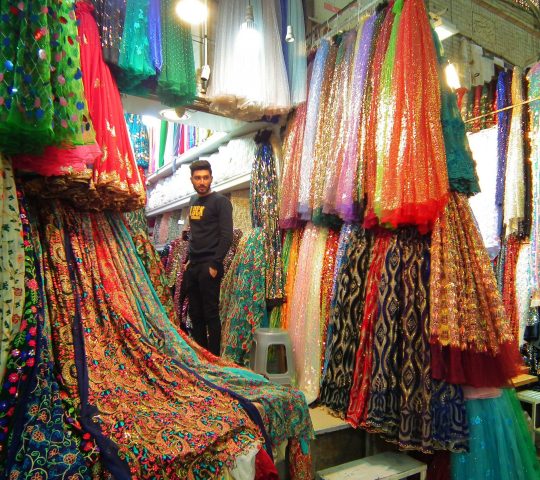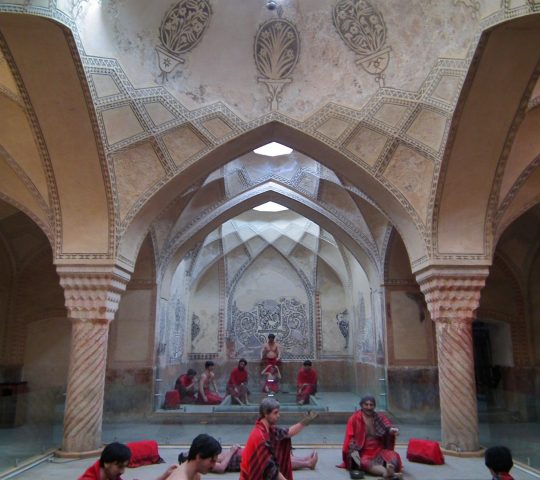Around the year 1602, Allah Verdi Khan, the warden of Fars Province in the Safavid era, wrote and sent a letter to Mollasadra and invited him to Shiraz because of him being keen on Mollasdra. But unfortunately, his life finished before he could finish building the school, and his son, instead, continued building it. The job was finished in 1615 and at that time his son, which was an old friend of Mollasadra, invited him to the school and Mollasadra started teaching in Khan School.
Not only Khan School is famous for its unique plaster works and Muqarnases, but also it was well-known for using special numbers in building the features of this building. For example, in this school 5 places are specifically dedicated to teachers for their stance while they are teaching, which refers to 5 holy people of Shi’a Muslims or it has 12 isles which are based on the 12 Imams of Shi’a Muslims. The area of Khan School is 7700 m2 and it has 100 chambers, which was dedicated to the learners for studying. Nowadays only 70 of them are left.
Vakil Mosque, Bazaar and Bath, Saraye Moshir, Shah Cheragh, Nasir-al-Mulk Mosque, Qavam House, and Zinat-al-Molk House are the attractions in the vicinity of Khan School.

